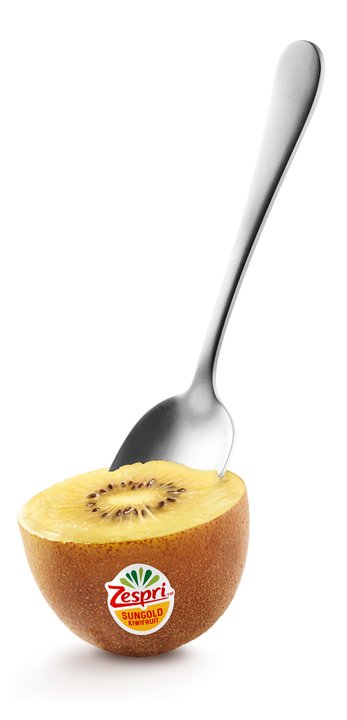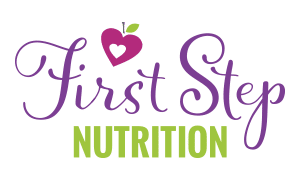
The 4 Most Important Nutrients to Support your Child’s Immune System
I am happy to bring you this sponsored post today, thanks to my friends at Zespri Kiwifruit. All thoughts are my own.
If you have kids, you’re likely struggling with back-to-back illnesses and viruses throughout the fall and winter. A-CHOO!
No specific food or nutrient can prevent or cure an illness. Yet most vitamins and minerals play some part in keeping our immune system functioning. And, of course, an overall diet full of fruits, veggies and whole grains will provide lots of antioxidants and immune support.
While overdosing on vitamins can be counterproductive, it’s crucial to have a diet (or supplements when necessary) to support our immune system.
Below are a few foods and nutrients that are especially important and how to get enough.
Vitamin C

Vitamin C is the classic well-known immune support vitamin. Vitamin C supports healthy immunity in multiple ways, including acting as an antioxidant to help your body fight free radicals.
How much does my child need?
Age 1 to 3: 15mg per day
Age 4 to 8: 25mg per day
Age 9 to 13: 45mg per day
Food Sources: SunGold Kiwi (261 mg per 2 kiwis), orange (70 mg per 1 medium), strawberries (49mg per 1/2 cup), red bell pepper (95mg per half cup), grapefruit (39mg per half), broccoli (51mg per half-cup).
One of the highest food sources of vitamin C (and a favourite in my family!) is Zespri SunGold Kiwi. A serving of 2 kiwis contains 3x the amount of vitamin C as a medium orange.
Serve a fruit or vegetable at each meal, and your child will have a good chance of meeting their daily Vitamin C requirements.
Vitamin D
Research shows that a deficiency of vitamin D can lead to an increased risk of infection. It plays a part in helping the body defend itself against viruses and bacteria.
How much does my child need?
The recommended dietary allowance for vitamin D is 600 IU per day for ages 1 through 70 years.
Food sources: Salmon (100 to 1,000 IU per 3.5 oz – wild has more than farmed), sardines (300 IU per 2.5 oz), tuna (236 IU per 3.5 oz), egg yolk (20 IU), mushrooms (100 IU per 3.5 oz fresh), fortified dairy (100 IU per 8 oz).
It’s tough to meet Vitamin D needs through food alone. And with constant sunscreen usage, you can’t rely on natural production from syn contact on the skin. So a supplement is a good idea for everyone in your family, year-round.
Zinc
Zinc is an antioxidant and anti-inflammatory. And research shows that zinc supplementation in deficient children can lead to decreased respiratory infections.
How much does my child need?
Age 1 to 3: 3mg per day
Age 4 to 8: 5mg per day
Age 9 to 13: 8mg per day
Food Sources of zinc: ground beef (5.3mg per 3oz), baked beans (2.9mg per ½ cup), dark chicken meant (2.4mg per 3oz), pumpkin seeds (2.2mg per 1oz), chickpeas (1.8mg per ½ cup), pork (2.9mg per 3oz), yogurt (1.7mg per 8oz), milk (1mg per 1 cup).
Luckily zinc is relatively well distributed in the diet. Try and serve a protein source at each meal, whether it’s meat, nuts and seeds or dairy, and you will be offering your child good sources of zinc regularly.
Probiotics
The definition of probiotics is: “live microorganisms that, when administered in adequate amounts, confer a health benefit on the host.”
There are many ways probiotics may support a healthy immune system, including killing pathogenic bacteria and increasing the protective immune responses from intestinal cells.
Studies have shown that probiotics can decrease the risk of upper respiratory tract infection (basically, colds).
How much does my child need? There’s no recommended intake for probiotics. You will see them measured on foods or supplements in CFUs or Colony Forming Units, ranging from about 1 billion to 10 billion. More doesn’t necessarily mean better.
And keep in mind some probiotic supplements and products should be refrigerated to help the probiotics last longer, as they can decrease with age.
Sources: Fermented foods like sauerkraut, kefir and miso. Probiotic yogurt is a good source that your child may be more likely to eat 🙂
As for supplements, I like using the website probioticchart.ca for certain strains and brands with evidence for specific conditions. When looking for pediatric health and evidence for ‘Common Infections Disease,’ one option with support is HMF Fit for School (amazon affiliate link).
How do you put this all together? Serve beans, seeds or meat for zinc, yogurt for probiotics, and fruit and veggies for vitamin C daily. And add a supplement of vitamin D. These are small steps to add to your daily food and supplement routine to decrease the chances of getting sick and staying in the classroom this year!
Founder of First Step Nutrition | Registered Dietitian Nutritionist
Jen believes raising happy, well-nourished eaters who have a healthy relationship with food doesn't have to be a battle! She is an author and speaker with 18 years of experience specializing in family nutrition and helps parents teach their kids to try new foods without yelling, tricking, or bribing.






No Comments